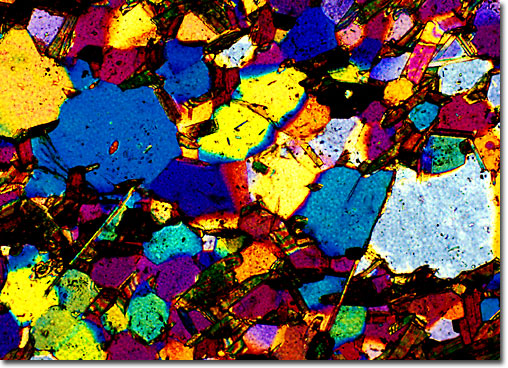Garnet
|
Garnet is the name for a group of related minerals, common to many regions of the world and often utilized as gemstones or abrasives. As gemstones, garnets appear in just about every color except blue: dark red, tangerine orange, translucent green, soft bluish-pink, and many others. Some garnets change color under different lighting conditions and others exhibit asterism, displaying a four-rayed star in reflected light. Most people, however, associate garnet with the dark red variety of stone that has been mined and worn as jewelry for thousands of years. The name garnet is thought to have come from the word pomegranate. Many ancient pieces of garnet jewelry are studded with tiny red stones that resemble a cluster of pomegranate seeds. The best-known gem varieties of garnet are pyrope and almandine. Almandine was most commonly used in the past and is known for its deep violet-red hues. Pyrope is the most common variety of red garnets today and is prized for its ruby-red color. A rather unusual variety of small pyrope garnets found in Arizona are called "anthill garnets" because they are mined by ants, who carry them out of the ground when they are excavating their anthills. The most valuable garnet, however, is the demantoid variety of andradite, a brilliant green mineral that was once mined in Russia's Ural Mountains. In 1998 a new source of garnet was found in Namibia, but the mineral is still exceptionally rare. The hardness of garnets makes them useful as an abrasive. Hard, high-grade garnets are ground up and used to make garnet paper, a popular sandpaper for use in fine sanding and polishing of wood, leather, glass, metals, and plastics. Lower-grade garnets are used as sandblasting agents and in the manufacture of nonskid surface coatings. Traditionally, garnets have been carried by travelers to protect against accidents far from home. In ancient Asia and the American Southwest, garnets were used as bullets because the glowing red color was said to increase the ferocity of a wound. In legend, garnets light up the night and protect their owners from nightmares. Many gem scholars agree that the tradition of birthstones arose from the Breastplate of Aaron described in the Bible (Exodus 28, 15-30). The breastplate was a ceremonial religious garment set with twelve gemstones that represented the twelve tribes of Israel and corresponded with the twelve signs of the zodiac and the twelve months of the year. There are many different birthstone lists, however, and some argue that they should be assigned by astrological sign and not month. Garnet is the birthstone for January and the zodiac sign Capricorn. |
© 1995-2025 by Michael W. Davidson and The Florida State University. All Rights Reserved. No images, graphics, software, scripts, or applets may be reproduced or used in any manner without permission from the copyright holders. Use of this website means you agree to all of the Legal Terms and Conditions set forth by the owners.
This website is maintained by our
|
